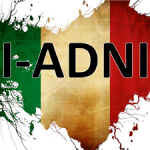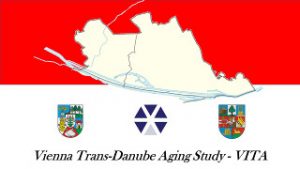Data cohorts in the neuGRID2 environment
|
To serve scientific research communities neuGRID2 is offering different datasets with different access rights. NeuGRID2 is registered on the Registry of Research Data Repositories (re3data.org). NeuGRID offers two main access rights:
|
|
PHARMACOG – MCI Patients Access Right: OPEN-ACCESS Clinical & Epidemiological characteristics: PHARMACOG (alias E-ADNI) marks the start of the most ambitious European project for tackling bottlenecks in Alzheimer’s disease research and drug discovery. PharmaCOG is short for “Prediction of cognitive properties of new drug candidates for neurodegenerative diseases in early clinical development”. It is a partnership of 32 academic and industry actors from 7 countries, co-ordinated by GlaxoSmithKline R&D and the Universitté de la Méditerranée, started its activities on January 1, 2010 thanks to significant funding (EUR 20.2 million) from the Innovative Medicines Initiative. 147 MCI patients are studied along 7 time points (i.e. BSL, T06, T12, T18, T24, T30 and T36). Please cite the investigators list when using PHARMACOG for scientific purposes. |
 |
|
PHARMACOG – DTI – Reproducibility Access Right: OPEN-ACCESS Clinical & Epidemiological characteristics: 50 healthy Caucasian subjects (50-80 years) were scanned in two sessions at least a week apart in 10 clinical 3T scanners distributed in Europe (5 subjects per site). Each acquisition session has one diffusion acquisition (2x2x2 mm3), b-700 s/mm2, 5 b0 and 30 diffusion weighted volumes. Scanner vendors were Siemens (Allegra, TrioTim, Verio, Skyra, MRBiograph), Philips (Achieva) and GE (Signa HDxt). The 100 raw diffusion datasets are available. Images are anonymous. Please cite the investigators list when using PHARMACOG for scientific purposes. |
 |
|
PHARMACOG – Morphometry – Reproducibility Access Right: OPEN-ACCESS Clinical & Epidemiological characteristics: 40 healthy Caucasian subjects (50-80 years) were scanned in two sessions at least a week apart in 8 clinical 3T scanners distributes in Europe (5 subjects per site). Each acquisition session has two 3D T1-wighted images (1x1x1 mm3). Scanner vendors were Siemens (Allegra, TrioTim, Verio, Skyra, MRBiograph), Philips (Achieva) and GE (Signa HDxt). Two volumes were not acquired giving a total of 158 brain volumes available. Images are anonymous. Please cite the investigators list when using PHARMACOG for scientific purposes. |
 |
|
PHARMACOG – resting – state – fMRI – Reproducibility Access Right: OPEN-ACCESS Clinical & Epidemiological characteristics: 65 healthy Caucasian subjects (50-80 years) were scanned in two sessions at least a week apart in 13 clinical 3T scanners distributes in Europe (5 subjects per site). Each acquisition session includes the acquisition of two 3D MPRAGE structural images and one resting state BOLD fMRI acquisition (3x3x3 mm3, TR=2.7s, TE=30ms, 200 volumes). Scanner vendors were Siemens (Allegra, TrioTim, Verio, Skyra, MRBiograph), Philips (Achieva) and GE (Signa HDxt, Discovery MR750). The anonimizied nifti raw datasets for the 130 acquisition sessions are available. Please cite the investigators list when using PHARMACOG for scientific purposes. |
 |






